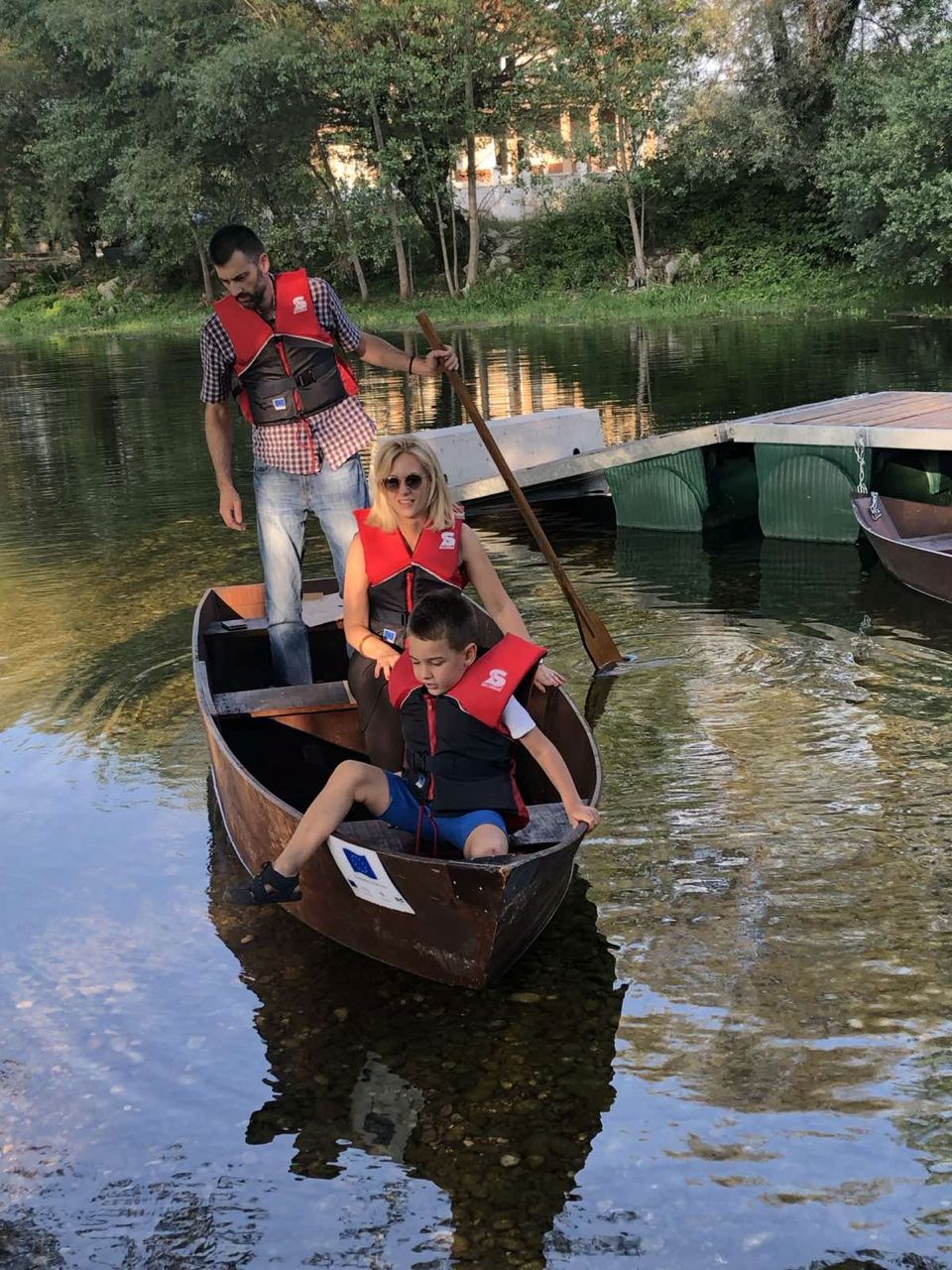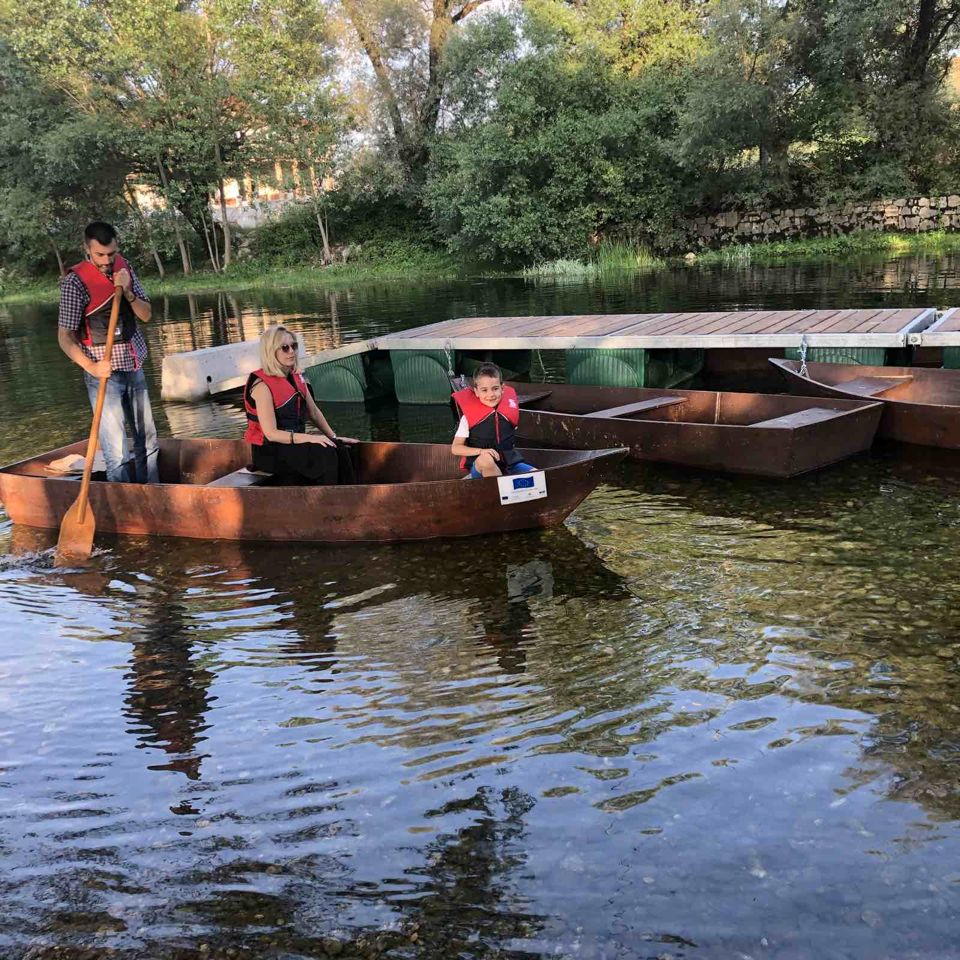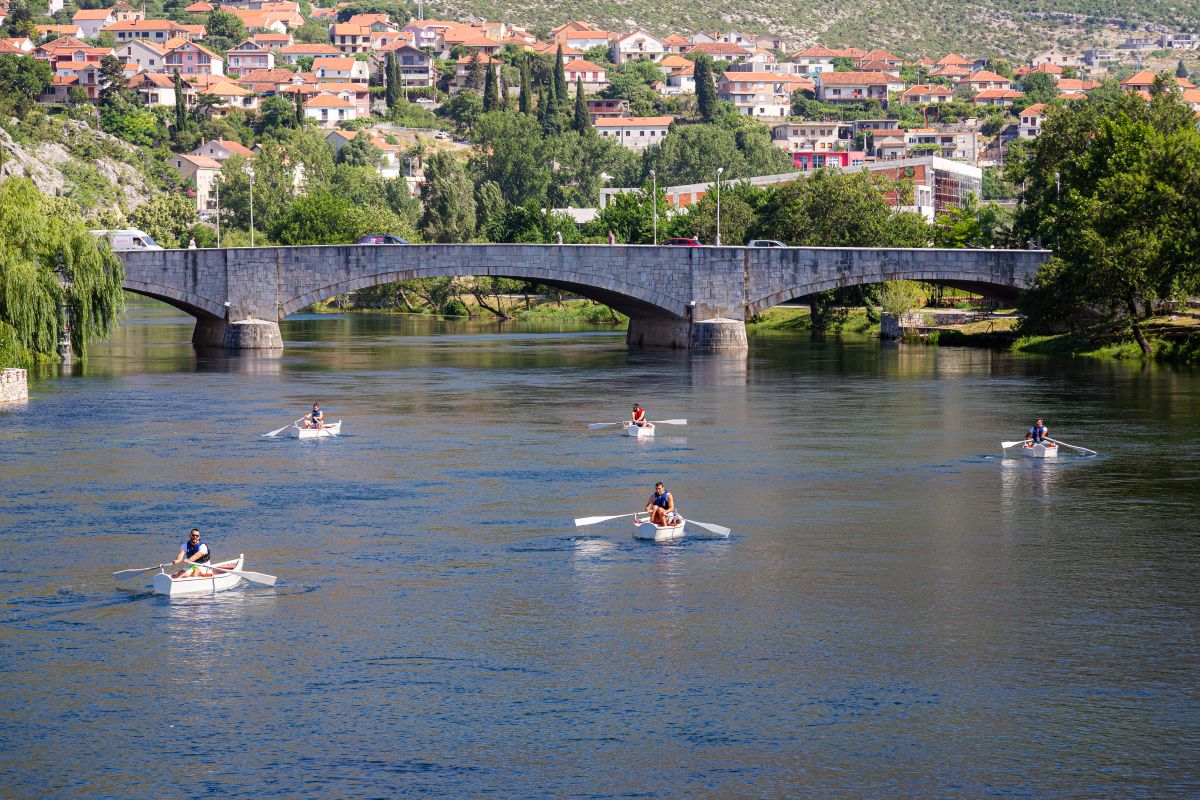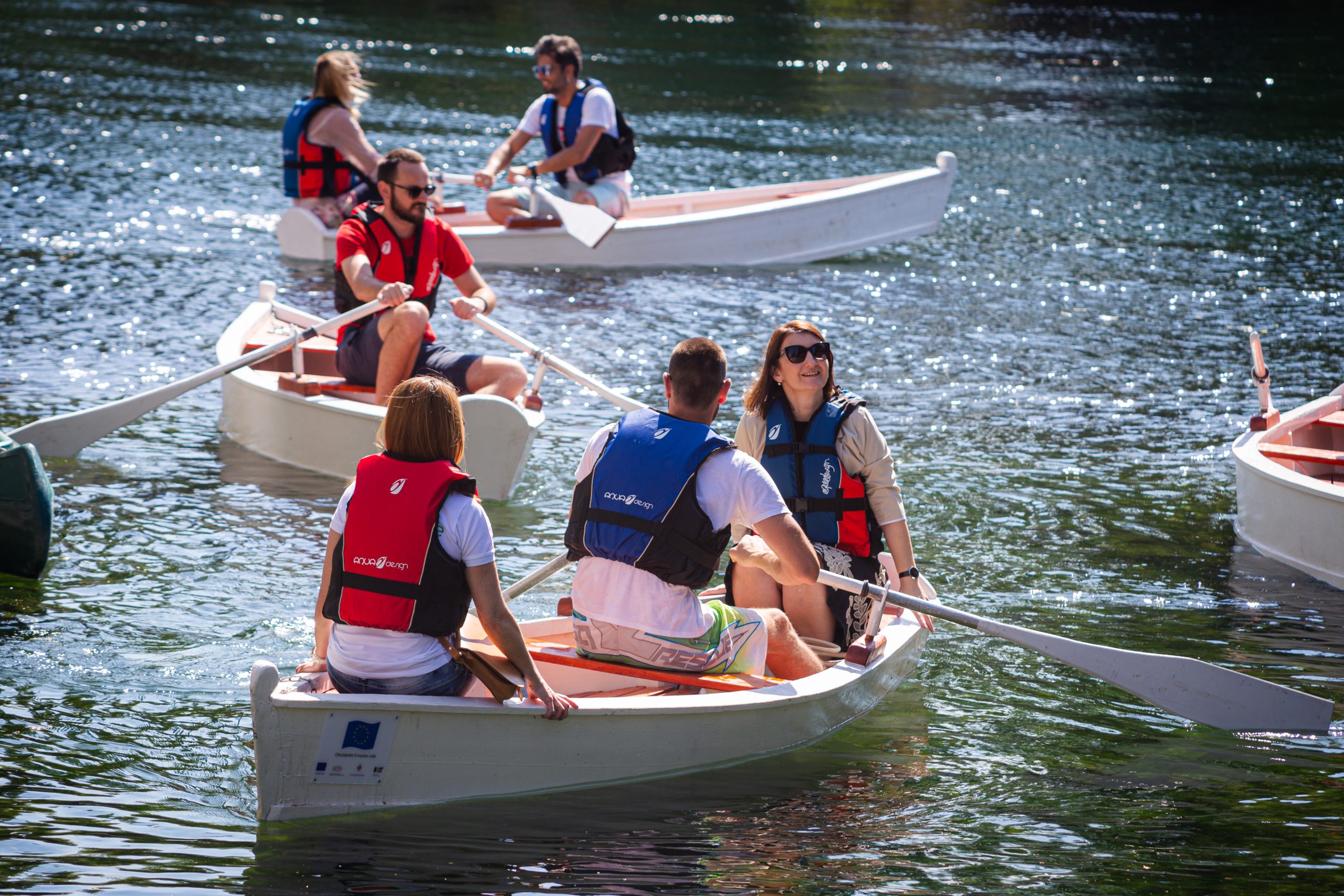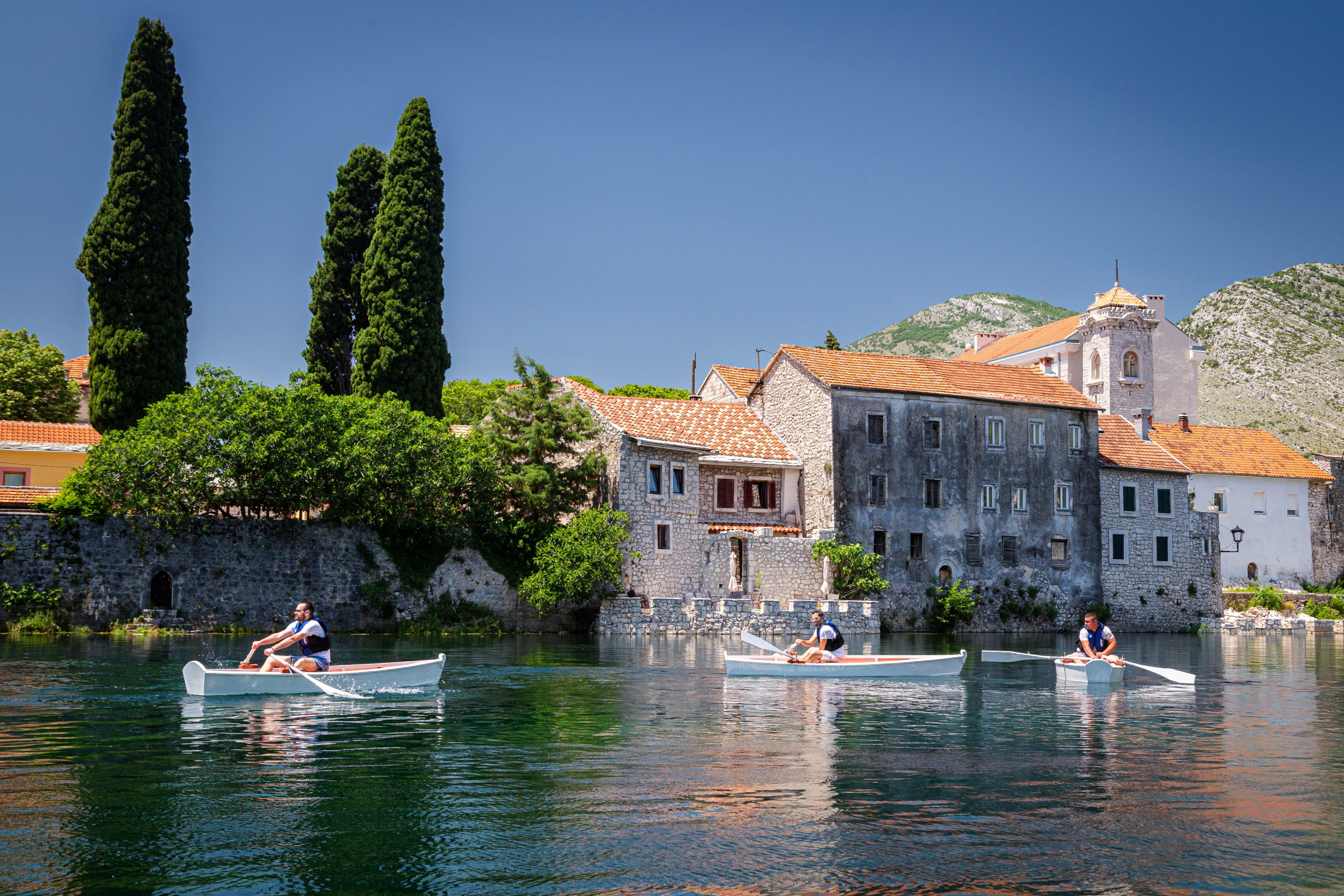Interview with Miljan Vuković, Director of the Cultural Centre Trebinje, and Slavica Striković, Executive Director of the NGO Ženska Akcija (Women Action)

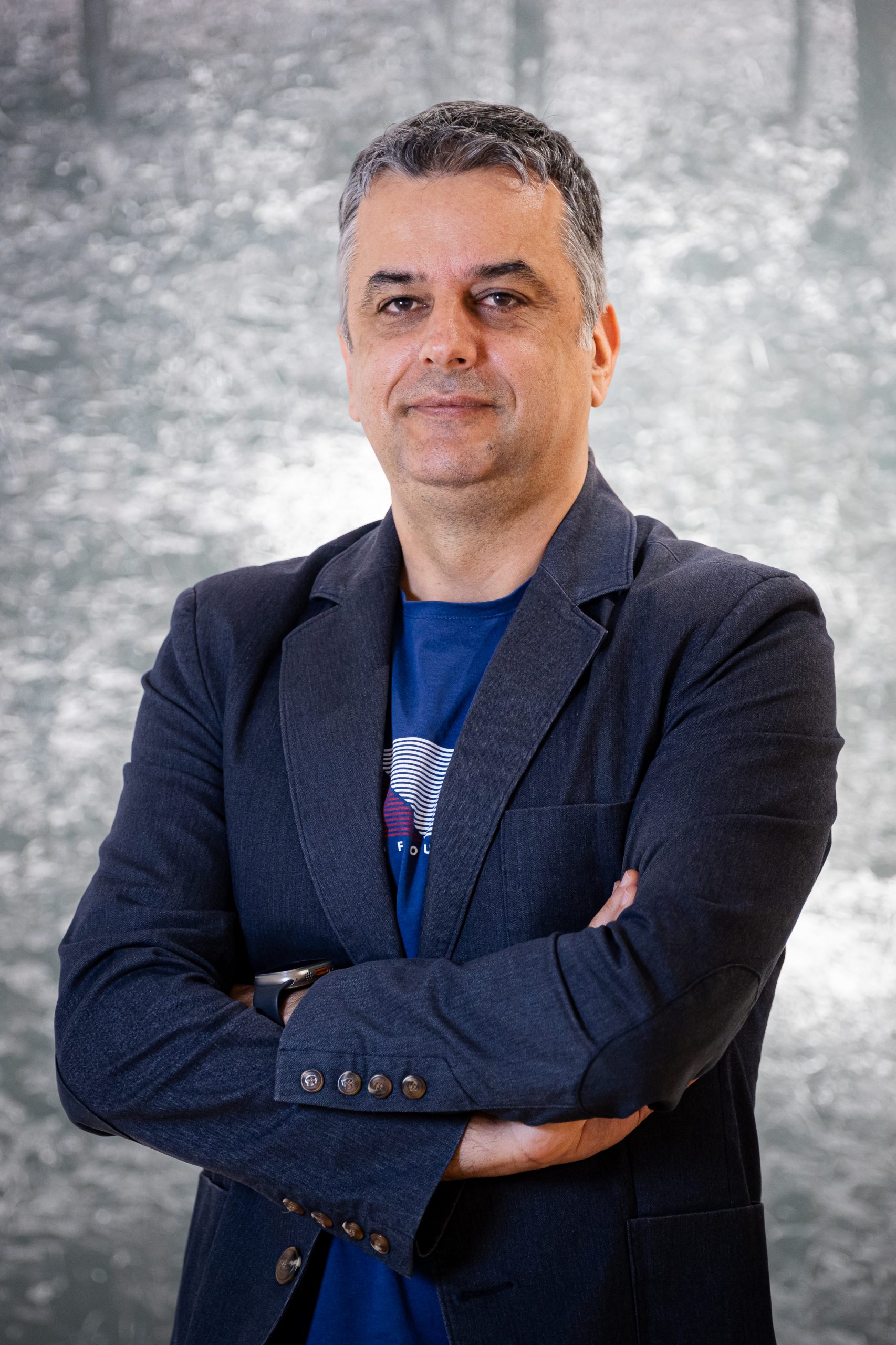
More than 5 years have passed since the implementation of the EU-funded project ‘Life on the BIH/MNE Border – Ancient Traces of Ageless Heritage and Tradition’ came to an end but proof of its sustainability is still there with evident and beneficial results for entire communities in both Bosnia and Herzegovina and Montenegro.
Starting at the beginning of 2018, with a duration of only 18 months, the project team managed to connect assets of the cultural-historical heritage with natural beauties and commercialise a joint touristic product. It encompasses 40 “ageless” locations in the municipalities of Trebinje (BA), Bileća (BA), Nikšić (ME) and Plužine (ME), for instance: old towns, fortifications, bridges, religious buildings, city monuments and natural beauties, making them more visible and accessible to tourists.
The Cultural Centre Trebinje (BA), as leader, in close cooperation with the NGO ‘Women Action’ (ME), the Centre for Culture Plužine (ME), the Centre for Development of Herzegovina (BA), the City of Trebinje (BA), the Association ‘Home’ (BA) and the Association of Book Publishers of Montenegro (ME), implemented this almost € 340 000 worth project.
At the end of April 2025, the CBIB+ team met Miljan Vuković in Trebinje, Director of the Cultural Centre, and then in Nikšić, Slavica Striković, Executive Director of the NGO Women Action (representing one of the cross-border partners). Mr Vuković and Ms Striković were members of the project management team, internally called ‘arks’ (‘barke’ in their languages).
CBIB + 4: How did this whole adventure start?
Miljan Vuković: The whole thing started over a coffee. In 2011, I was engaged in a project called ‘Books Across the Border’, also financed by the same programme and with similar partners but the Cultural Centre Trebinje was not among them. Several years after that, we started discussing about a cultural or tourist product that could connect Trebinje and Nikšić and the surrounding area. Thus, we came up with the idea of dealing with boats that Trebinje used to have on the River Trebišnjica and Nikšić on Zeta, but which were not there any longer. We managed to find an old master who had the original designs of the boats. Unfortunately, he is no longer among us. Our idea was two-folded: (1) construct the boats and treat them as a cultural and historical asset of the region; and (2) identify, map and include the cultural and historical monuments of this region that had some kind of quality, regardless of their significance, in touristic offer of the region.
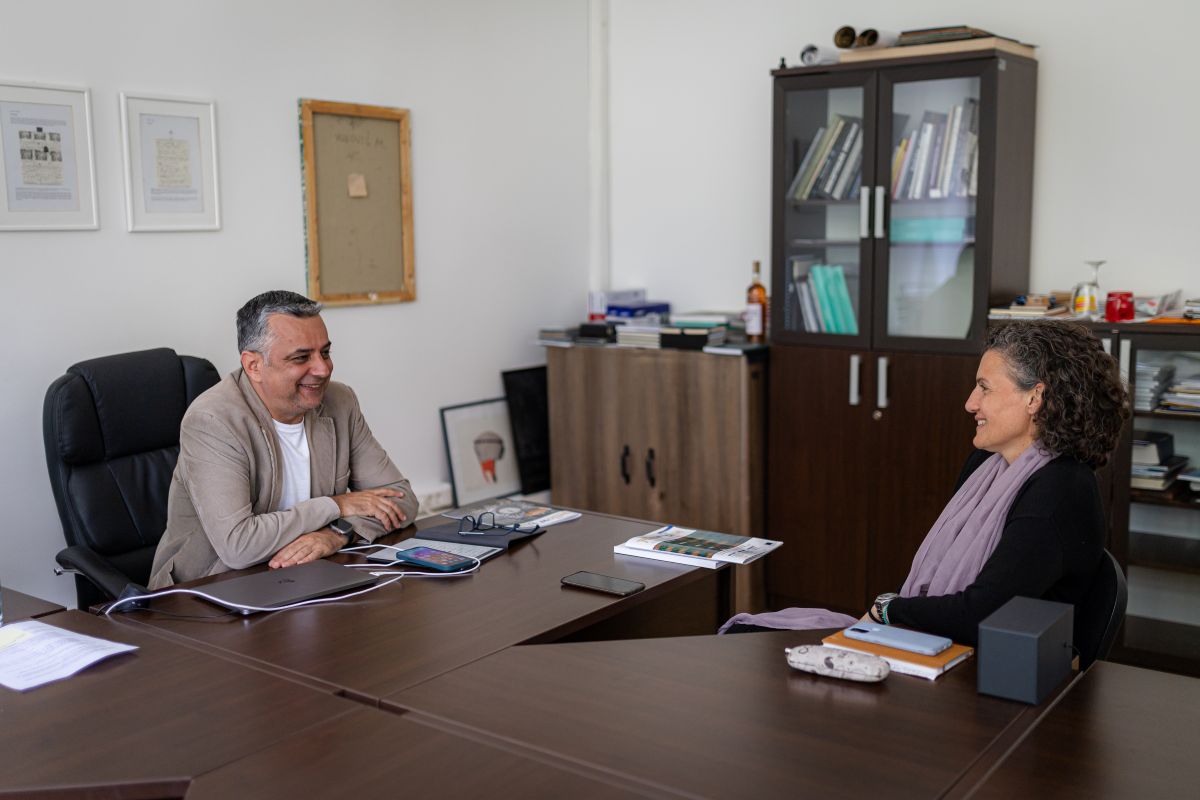
For example, here in Trebinje, in the city park, we have a monument dedicated to the partisans, Nandor Glid’s work, a worldwide famous sculptor and former rector of the University of Arts in Belgrade. He will be most remembered by the Monument to the Victims of Fascism in Mauthausen (A), the Monument in Yad Vashem in Jerusalem, the Monuments to the Victims in Dachau (DE) and Šumarice in Kragujevac (RS). Even though this monument was built under a heavy communist regime with strict standards, Glid managed to keep his artistic style and create a masterpiece of universal significance free from socio-realistic matrices and symbols. This is somehow unknow even to citizens of Trebinje. The idea was to include all those monuments that have cultural and spiritual relevance and skip those that have no importance but a strong ideological dimension.
In the same park, we also have a statue that was the first monument dedicated to Njegoš, not only in the former Yugoslavia, but worldwide. This monument was funded by Jovan Dučić, a poet and diplomat, as a legacy to his beloved hometown Trebinje. For this monument, Dučić engaged the best sculptor, Toma Rosandić, the creator of the sculpture “Black Horses Prancing”, placed in front of the National Assembly in Belgrade. This is one of the rare if not the only monuments dedicated to Petar II Petrović-Njegoš where he is presented as poet and not as monarch and bishop.
We also included natural pearls like the Red Rock (Crvena Stijena) Cave in Montenegro, that is known to a very limited number of people, even in Montenegro. It is the most significant prehistoric site on the territory of Montenegro that provides insight in the cultural changes, development of society and its natural surrounding within a time span of more than150 000 years.
All these locations, fortifications, bridges, churches, natural pearls, mapped and valorised during the project are promoted by the touristic organisations of the municipalities covered by the project and each location is marked with a QR code still available and revealing interesting stories – 40 QR cods for 40 different locations.
We also managed to reconstruct the marina Trebinje and part of the walls of the old city of Trebinje and build pontoon marina in Manitovac in Nikšić. Our original idea was to launch the Montenegrin type of boats in Lake Plužine, but due to the high oscillation in the water level since it is artificial, we were forced to find a more suitable location. Slavica proposed Manitovac, a picnic area in Nikšić, that looks like a place from a fairytale. She has a special gift for finding these fabulous locations.
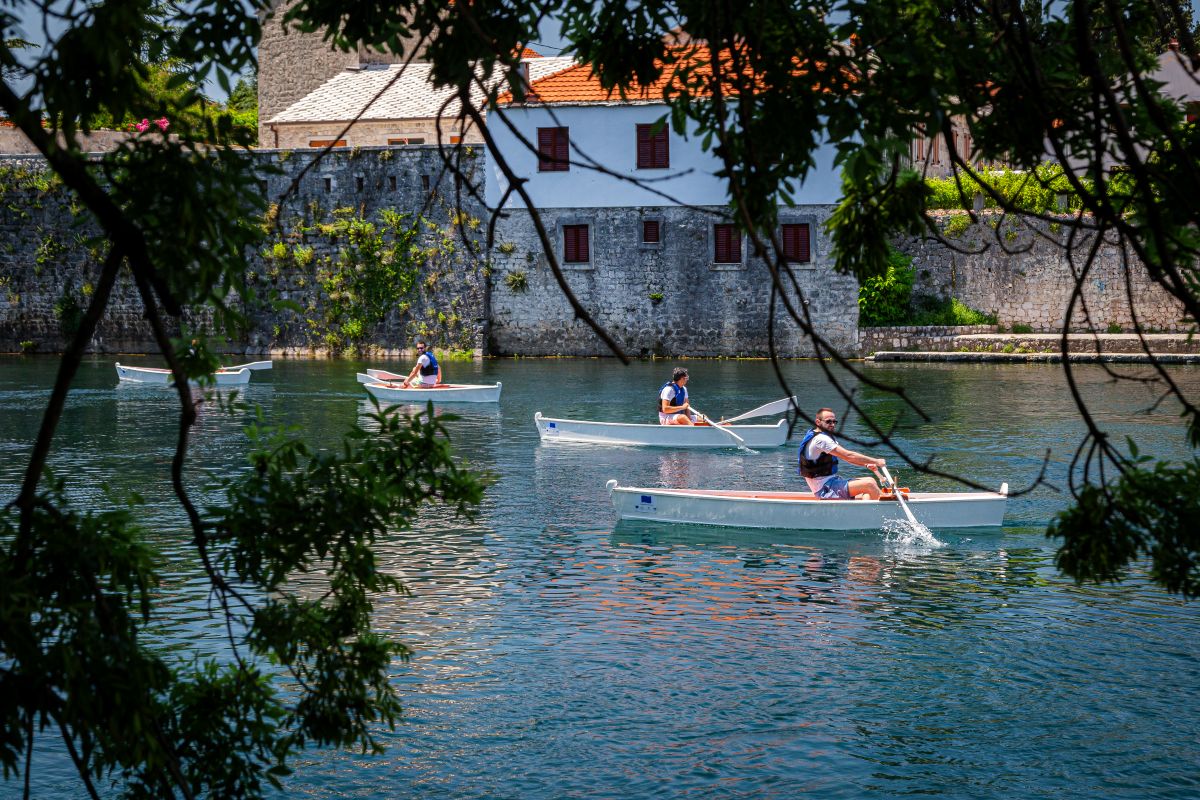
In addition to these works, we purchased the necessary safety equipment for the visitors. It is still in use in both locations.
Together with the touristic organisations of these municipalities, we developed different routes. For example, visiting interesting cultural locations in the old city and getting familiar with the locations though QR codes, and after that the tourists can take a guided tour in a boat where the locations would be seen from the river perspective especially those with a better view from the river itself like Banj Vir or Arslanagić Bridge, both in Trebinje. The guide would tell a story about each and single location combining historical facts, anecdotes and legends.
CBIB + 4: What has the city of Trebinje gained through this project?
Miljan Vuković: The traditional boats on Trebišnjica and Zeta, constructed by the project, are currently the most attractive part of the tourist offer in Trebinje and Manitovac/Nikšić. They even attracted the attention of high-level officials from the European Union. Some of them were privately taking a boat ride on Trebišnjica. Few years ago, the Cultural Centre hosted a meeting of ambassadors of all countries of the European Union for the Europe Day, on 9 May. After the meeting, a boat ride competition took place.
At the same time, the Trebinje citizens got familiarised with the cultural, traditional and historical heritage and natural beauties of the region. This project has triggered a lot of other initiatives that have enriched the touristic offer of the city (e.g.: dinning on a boat along the Trebišnjica).
We always felt that the city recognised these results as its own. Currently, we are discussing the takeover of the project website by the city to keep enriching the touristic offer of the region. The boats are currently under maintenance to be ready for the summer season. The city of Trebinje also plans to permanently take care of them.
In addition, the city of Trebinje, implementing CBC projects as well, decided to provide the needed co-financing for the new EU-projects from the city budget, recognising with this decision the importance these projects have for the development of the city and the whole area.
And finally, in 2019, we were awarded for the most successful touristic product of Bosnia and Herzegovina. This award definitively belongs to this city and this region itself.
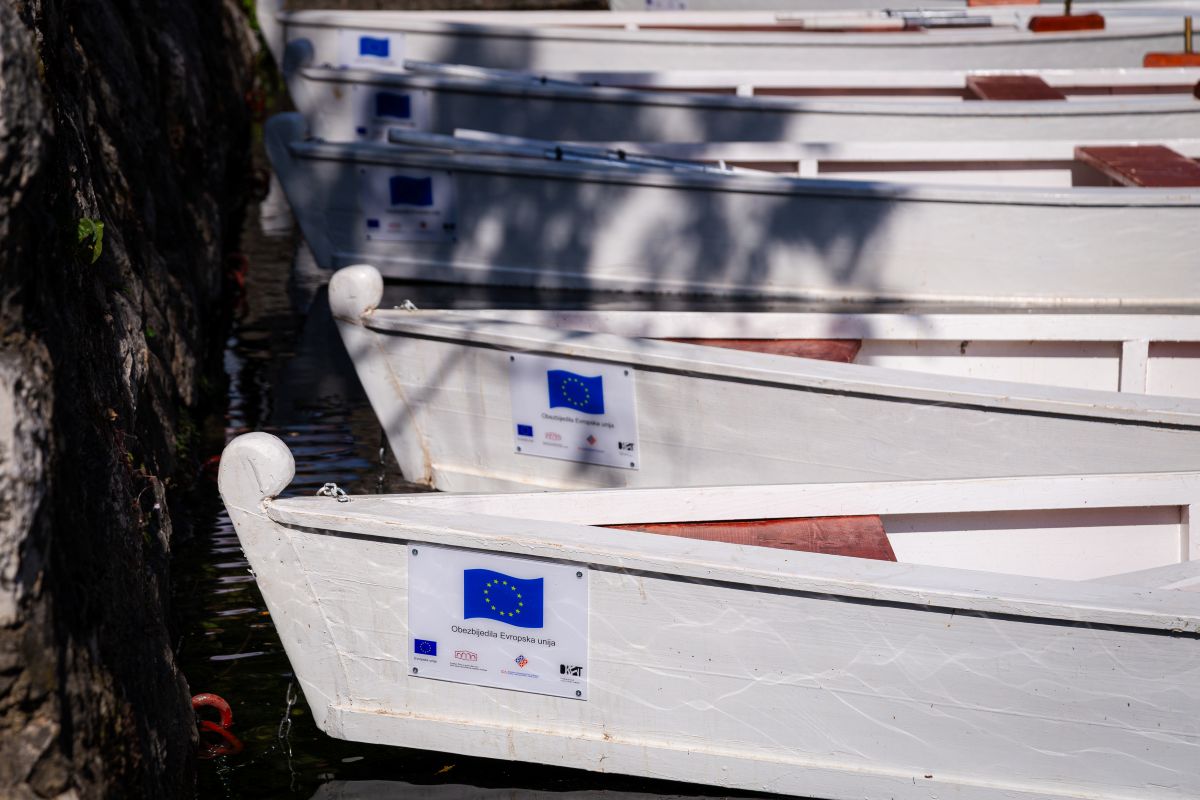
CBIB + 4: And what about the Cultural Centre?
Miljan Vuković: The Centre has gained invaluable experience in project management, especially when it comes to financial management and procurement procedures in line with EU rules. In addition, this project was considered and presented as an example of good practice not only by the Bosnia and Herzegovina – Montenegro programme, but also by the Delegation of the European Union to Bosnia and Herzegovina. Therefore, the Cultural Centre Trebinje had a good reputation. Last year we finished the implementation of the project named ‘ReCulture: Re-branding of Cultural Institutions in Western Balkans’, funded under Culture Europe programme. If I remember right, 13 projects were selected for funding under that call, and our project had the best score.
CBIB + 4: The Cultural Centre Trebinje was the coordinator of the ReCulture project. What were the main challenges and benefits?
Miljan Vuković: The difference in the application process was big and the most difficult was to provide supporting documents that could prove that our Centre is a cultural institution. The writing itself was easy. The project involved changes in visual identity, marketing strategies, programmes, and activities to better reflect current trends and audience needs. It helped us attract a new audience, refresh our presence in the media, adapt to societal changes, and reaffirm ourselves as a relevant and innovative institution in the field of culture. And our institution gained a lot through this project. We have created new opportunities for collaboration and partnership with other organisations such as the Art Colony Danilovgrad (ME), the Museum of Contemporary Art Banja Luka (BA), the Institute for Cultural Policy (Austria), MuCEM – Museum of Civilizations of Europe and the Mediterranean (France), INK Fest and Faculty of Dramatic Arts (Serbia). And it was priceless. On the other hand, we gained greater visibility and recognition for our managerial capacities.
CBIB + 4: What have you personally gained thanks to this project?
Miljan Vuković: I have personally understood that a good product in the field of culture can generate profit for the city and the institution. I grew up in the communist era, later in the transition, where culture was seen as a mythical piece, something that is spiritual and cannot be treated as a commodity. The western countries totally have an opposite logic – if it cannot generate profit, it should not even exist. I personally managed to find a compromise and live between these two totally contrasting approaches. This project showed that culture can also be profitable. This approach is now used for almost all the culture products of the Cultural Centre. I personally have improved my managerial skills, especially related to project management. Even before the cross-border cooperation projects, in 2004, I worked for a project addressing the needs of people with disabilities, but working independently is very different from working with cross-border partners.
 CBIB + 4: And to conclude, how does an artist cope with project management?
CBIB + 4: And to conclude, how does an artist cope with project management?
Miljan Vuković: It is not easy at all, especially if one is actively engaged in arts. In my specific case, suddenly there was a split between the real, everyday life and the painting I did. I simply saw that I was painting automatically, and that I was only transferring to the canvas what I had learned before. Some 3 years ago, inspired by Dostoevsky’s ‘Notes from Underground’, I created a concept that was in a way my fight against the administration. Every morning, while coming to work, I was selecting a mathematical formula, wrote it down on paper and then that day I fought against that formula producing a drawing. 365 days and 365 drawings of the fight against mathematics and administration.
CBIB + 4: During the interview with Miljan, we got the impression that you succeeded establishing an effective partnership and that you had a lot of fun as well.
Slavica Striković: When Miljan called to ask me whether I was interested in having an interview with you, we concluded the conversation stressing how good our project had been and how much we missed it and that we should do something together again. As it is normal, there were those that worked more, those that worked less, with more or less creativity and rationality. And in hindsight, I can say that it was a very good team. And we worked and delivered a lot and had fun at the same time. We carried out a lot of joint activities: training for guides, info sessions, meetings with local self-governments in four municipalities, and all these gatherings ended with lunch or dinner depending on the duration of the activity itself, and of course everything was paid from our pockets, meaning from our salaries. We were starting with a good brandy and ending with a good wine. We understood each other very well and shared the same sense of humour, which is very important. I was the only woman in the project team. And since I deal with gender, i.e. pushing gender equality and highlighting the position of women, I was trying to find locations valuable to local communities in terms of cultural and natural heritage, that at the same time had a kind of gender dimension. We chose those locations where the authors or co-authors were women, or in some legends or historical facts, women played a significant role. I was the only woman in the company of few quite strong and very capable men. And that made me happy. I had a lot of fun at our meetings and looked forward to each of them.
CBIB + 4: You implemented a very successful project, with excellent results, still available and attractive to tourists coming to this area. What aspects do you think that could have been improved?
Slavica Striković: We benefited from the great commitment of the local authorities in Trebinje, and I regret to stress that it was not the same in Nikšić. I feel that the local authorities of that time in Nikšić could have been more committed and assumed more responsibility.
CBIB + 4: Can you share any of the stories of some location that you included in the project maps with a sophisticated woman touch that you personally like?
Slavica Striković: We ignore the exact date of construction of the Moštanica Bridge (ME), but many scientists believe that it dates from Roman times around the 3rd century AD. There are no historical facts, but the legend says that the women ensured the complete logistics for its construction. The bridge structure is also very interesting, since it is bent in the shape of a tobacco pipe and because of this elbow-like curve, according to the oral tradition, the Ottomans called it “Lula ćuprija”.
The relocation of the Piva Monastery is another very interesting story for me. Piva is one of most significant monastery complexes in Montenegro, which was once located at the source of the Piva River, but due to the construction of a dam called the Electric Power Plant “Piva”, it was relocated. The necessary works lasted longer than a decade, from 1970 to 1982. From the walls of the temple, 1 260 m² of frescoes were taken down and put back again. The building itself was “unbuilt” stone by stone and built again on the new location. Almost all the people living in that area took part in the relocation of the monastery. I heard this amazing story from a nun who was an architect before coming to the monastery. She explained to me how this was technically undertaken. Now some 20 years later I cannot remember all the technical details, but I still remember this story and I know it will live forever.
CBIB + 4: Which step in an EU project preparation and/or implementation you consider as the most difficult one?
Slavica Striković: Some deem the reporting process itself as difficult, it is not for me. I just don’t like time sheets. I don’t understand their purpose, especially if we are performing properly and the project is delivering results. In this concrete case, the partners from Bosnia and Herzegovina were more engaged in the proposal writing, we contributed with some fine details from our side. The most important and sometimes the most demanding is establishing effective cooperation with local self-governments and ensuring their commitment. It is essential for sustainability of the results and their ‘life’ after the project comes to an end.
CBIB + 4: What do you consider the main benefits for the local community as well as for yourself?
Slavica Striković: We brought some locations closer to young tourists with the help of new technologies and QR codes. That dimension was endlessly interesting to me as well. We contributed to introduce tourists to some locations that are not so famous, and we told a story of our culture and tradition. Thanks to excellent media coverage the information spread all over the region but also beyond.
The website, boats, the old masters who built boats, modern and traditional, and everything had a fine, human dimension. That homemade quince brandy (rakija) that I had with the old master who built boats, telling wonderful family stories of how he included his sons in this business. Those boats are in regular use, the docks are there in use as well, with all the security vests and all other equipment. It can be promoted even now after so many years.
CBIB + 4: What are you currently working on?
Slavica Striković: We are now implementing one large, and very nice regional project related to gender budgeting, which is implemented in Moldova and the 6 Balkan beneficiaries. Moldova is specific, simply different when it comes to gender budgeting, and it is often taken as an example of good practice. This means having programme budgets, which are formed based on up-to-date data on people’s needs and allocation of priorities for that year. Instead of spending taxpayers’ money to address selective needs before the elections. Establish a system where responsible authorities make decisions on verified reliable data. For example, we have reliable data confirming that the number of breast and prostate cancers has increased in ecological black spots in Montenegro. Those are specific male or female diseases, and through preventive measures targeting environmental protection and a good response to climate change, we are protecting the health of men and women, which is quite specific. Through good media campaigns, we can really influence people not to buy and throw plastic bags, to save water resources because they are decreasing, etc. This project is now in its second phase (2022 – 2026). With this kind of budgeting, we respond to the impact of climate change on men and women and the impact of men and women on ecology. At the same time, we are developing tools for adequate reactions to hate speech in the media.
CBIB + 4: Do you have any recommendation for the organisations that would like to embark in the CBC programmes?
Slavica Striković: Insisting on high quality and responsible work, and then you must have media support.
CBIB + 4: What do you see as the major benefit for your organisation from this project?
Slavica Striković: Our organisation gained continuity in working with culture related issues. Under the first CBC project we dealt with book fairs, the second was the one which is the topic of our talk. These two projects profiled our organisation as the one from the sphere of female activism that deals with culture and media. And there aren’t many of us with this profile.
CBIB + 4: What are your plans?
Slavica Striković: We hope that with the same partners we will implement a third cross-border project, and I believe that it will again be different from others, more innovative, more creative, and that we will even have a greater sustainability.
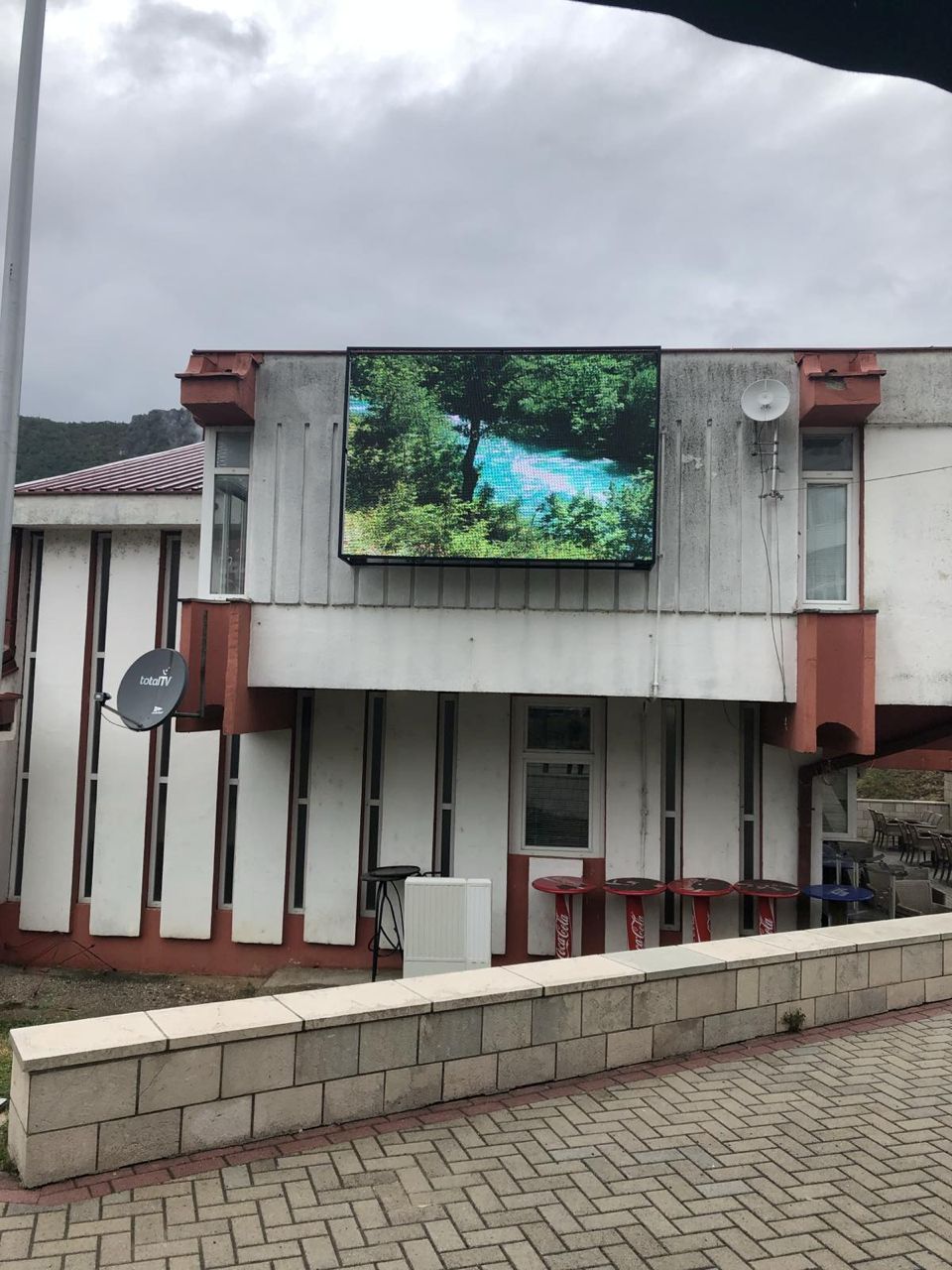
Nota bene: For more details about the locations and touristic routes designed by this project, check the website https://www.heritage-bih-mne.com/


